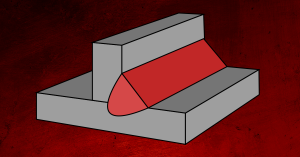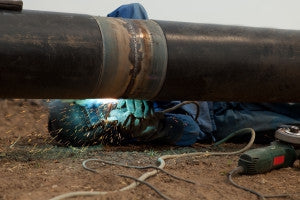2017 saw the rise of a nightmarish dance move known as the “dab”. To be very clear, that’s not what we’re talking about.
Dabbing in the welding world is one of the most common techniques used for TIG. Mastering the dab technique can provide your TIG arsenal with an incredibly valuable skill. Here’s a step-by-step guide on how to get started dabbing.
What does Dabbing consist of?
It’s not a very clever name. Dabbing is exactly how it sounds. As you move your torch along, you’ll quickly “dab” your filler material at the base of your puddle for a brief period of time. When done correctly, dabbing can be a good “go-to” technique for any sort of general application. Interestingly, if you’re planning on ever working with flying machines, dabbing is used almost exclusively in the aerospace industry.
How to Dab
Like much of welding, there’s 2 major components of what makes a good dab weld: Knowing what you’re doing and being consistent. Reading this post and watching a few YouTube videos will give you all the knowledge you need to start dabbing. Being consistent, on the other hand, is simply a matter of practice. If your first dab weld doesn’t look great, don’t go Rambo on our comment section… just yet. With a little bit of experience, you’ll find dabbing will be an incredibly useful technique.

The first step with any weld is making sure you’re using the correct settings. You might roll your eyes, but a huge chunk of welding problems are related to using the wrong settings. If you’re unsure where to start (and you’ve misplaced your reference guide), we suggest getting your baseline with a free welding app (learn about the best free apps available here).
After you’ve got the correct settings, begin by initiating your arc. Ramp up your amps and then begin with a dab at the base of your puddle. The dab should be quick, no more than a fraction of a second. Once you pull your filler material away from your puddle, move your torch then stop and dab again. The timing will all vary based off your personal preference, materials, settings and equipment. What’s important is to keep your timing consistent. Some welders go as far as humming a rhythm to themselves that they can follow (something simple, like a 2-note beat where you dab on one note and move on the other).
Make sure you keep your filler metal in your shielding gas. With any TIG process, it tends to be an exercise in doing multiple things at once. And getting that type of muscle memory down just takes experience.
Some TIG experts swear by the dab technique while others only recommend it in specific situations. In reality, a lot of the argument comes down to personal preference. However, knowing how to do a consistent, quality dab is always a valuable skill to have in your toolset.
For more TIG tips, check out our post below on walking the cup with the button below.







